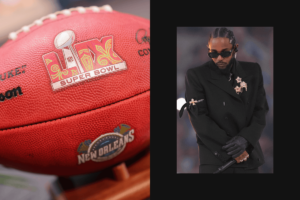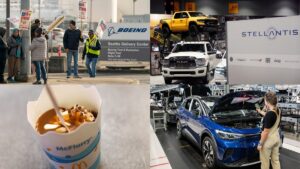It has been almost 70 years since Francis Thomas Bacon develop a source of clean green energy which would help propel the first moon landing and change the course of history.
Yet few are aware of the Cambridge-based engineer known as Tom, whose invention of the first working hydrogen-oxygen fuel cell helped send Apollo 11 to the moon His pioneering work continues to be a source of inspiration for scientists working on renewable energy solutions today.
Now the charity Cambridge Past, Present & Future is trying to shine a light on Bacon’s remarkable achievements by honoring him with a blue plaque at his former home in Little Shelford, Cambridgeshire.
Bacon’s fuel cells – nicknamed “Bacon Cells” by Nasa in his honor – provided secondary power for the Apollo missions, producing electricity for communications, air conditioning and lights, as well as water for the astronauts.
“Usually, over time a battery runs out and you have to recharge it,” Bacon said BBC Radio 4shortly before the moon landing in 1969. “Now, [with] this device, as long as you keep feeding hydrogen and oxygen into it, and you remove the water that’s formed, it will generate power indefinitely – and the astronauts drink the water.”
The efficiency and high energy density of the fuel cells played such an integral role in the success of the Apollo missions that President Richard Nixon told Bacon, “Without you, Tom, we wouldn’t have gotten to the moon.”
Sam Stranks, professor of energy materials and optoelectronics at the University of Cambridge, said: “He was a pioneer. Fuel cell technology was extremely important to the space program because as long as you can continuously supply the gases, you can continue to produce electricity.” This is essential in a remote location like outer space. “Of course there is no easy way to get electricity there.”
Bacon’s legacy continues to inspire scientists today working on new technologies for solar power, hydrogen generation and battery storage, Stranks said, and fuel cells remain “very relevant” as a potential way to provide green electricity and emergency power, especially in remote locations.
They could also power the electric engines of long-haul trucks and ships in the future, avoiding the need for impossibly large and heavy rechargeable batteries and fulfilling a dream Bacon shared in his BBC radio interview. “I always hoped it would be used to drive vehicles around,” he said, before predicting: “In a modified form it’s going to come.”
Stranks said: “I see him very much as a visionary and an unsung hero. The fuel cell is a sustainable power solution that foreshadows today’s clean energy efforts and was decades ahead of its time.”
A direct descendant of the Elizabethan philosopher and empiricist Francis Bacon, he began researching fuel cells while working for an engineering firm in 1932, a few years after graduating from Cambridge with a third class degree in mechanical sciences.
Almost a century earlier, physicist William Grove had demonstrated the theoretical concept of fuel cells in 1839, but could not generate much electricity. Excited by the great potential, Bacon secretly began experimenting with the highly flammable gases, on his employer’s premises.
to newsletter promotion
Told to either quit or quit, he quit his job and devoted his life to devising a solution to this complex problem, working first at Cambridge University, then Marshalls, a local manufacturer.
He later revealed in his BBC interview that for decades it was unclear what the practical utility of his invention would be, and he struggled to fund his research as a result. Then, in 1962, NASA decided to test its alkaline fuel cell for the Apollo program and an American company invested $100 million in the project.
“British engineers have some of the most brilliant ideas, but turning those ideas into commercial successes is what often fails, and Bacon faced that,” said Cambridge professor Clemens Kaminski, head of the chemical engineering and biotechnology department. where Bacon once worked. “Yet he persevered.”
After returning to Earth, astronauts Neil Armstrong, Buzz Aldrin and Michael Collins met Bacon at Downing Street and presented him with a signed photograph of Armstrong’s famous first “small step” on the moon.
Outside the scientific community, however, Bacon, who died in 1992, is not widely known, Kaminski said. “He was an incredibly modest and quiet man. His joy was solving problems and coming up with real solutions for the benefit of society.”




